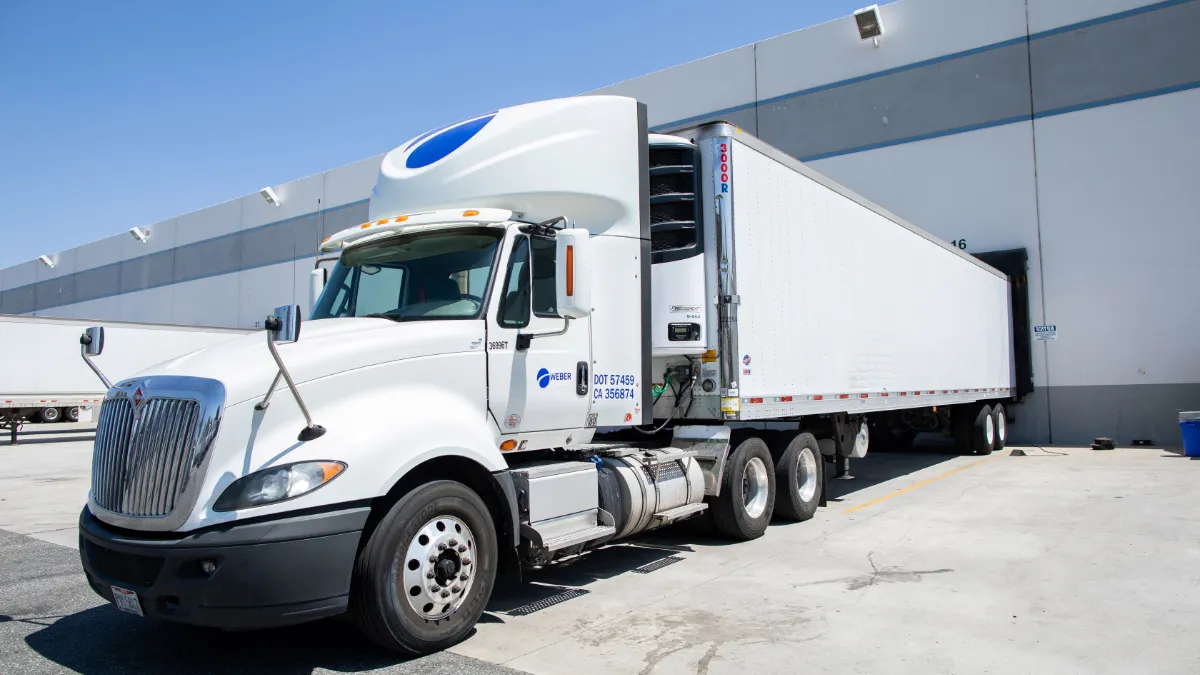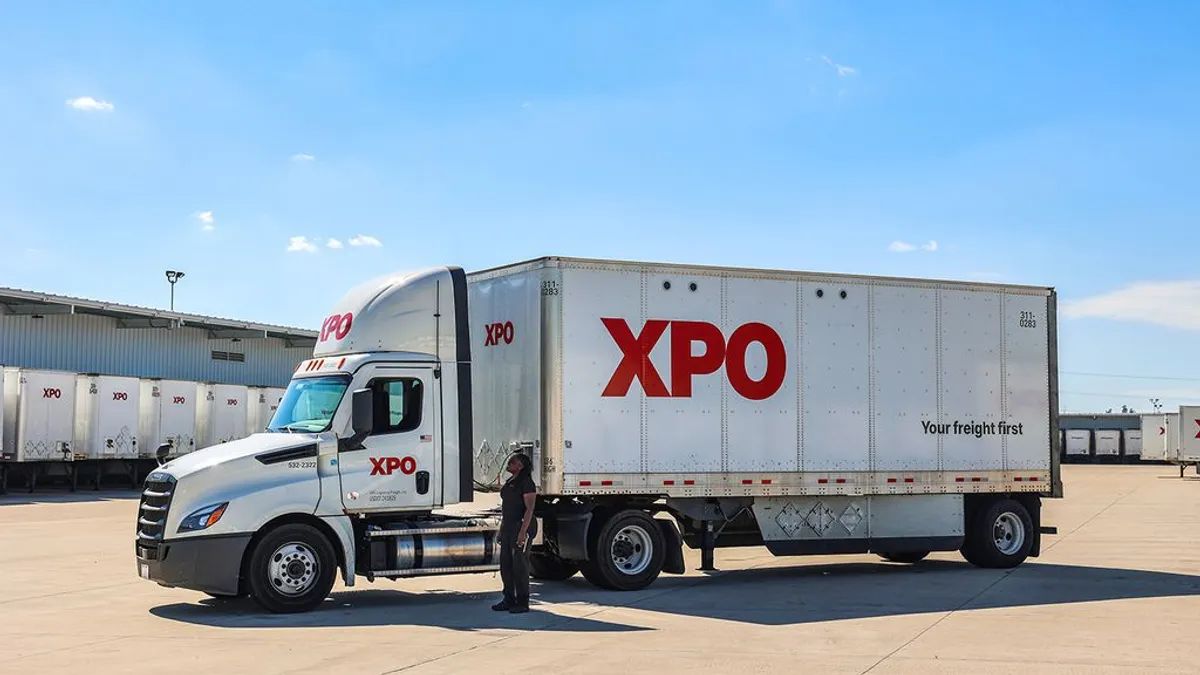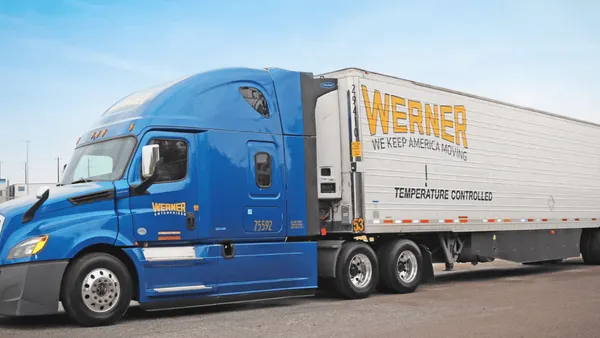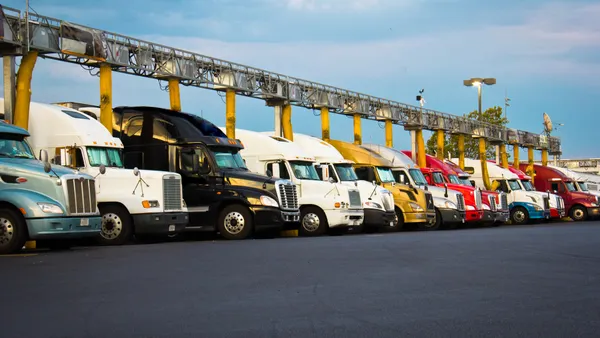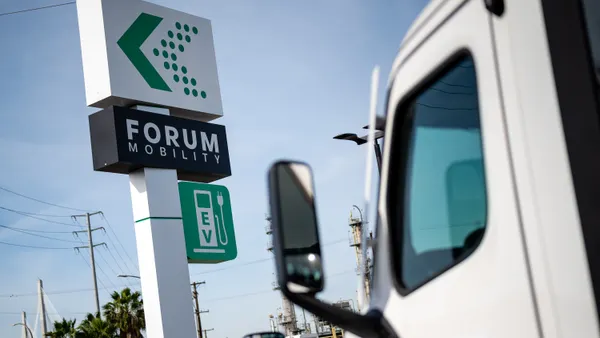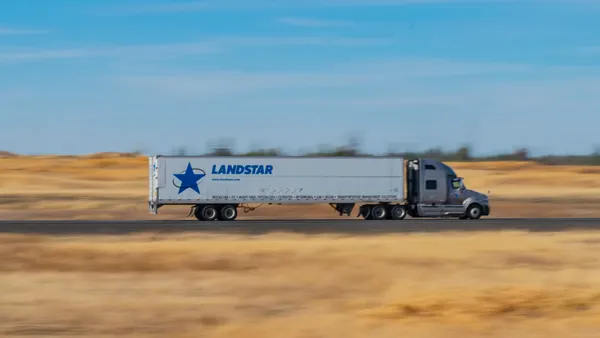Dive Brief:
- Lamb Weston relied more on spot trucking capacity than it normally does in its most recent quarter, which resulted in transportation costs increasing "significantly," CFO and Senior Vice President Robert McNutt said on Wednesday.
- The company usually relies more on rail for moving inventory from factories to distribution centers, but changes in production schedules meant Lamb Weston needed a more flexible transportation option, McNutt said.
- "Because of the disruption to our production schedules, and again to prioritize customer service, we leaned more on expensive spot trucking," he said.
Dive Insight:
In the current trucking environment, demand exceeds the supply of available trucks and drivers. Shippers pushed to the spot market will pay more than they're accustomed to for moving their freight.
The most recent spot market data from DAT shows van rates up 42% YoY and 11% MoM in March, and reefer rates were up 34% YoY and 9% MoM.
When transporting freight by truck, McNutt said, Lamb Weston usually relies on contract carriers "as opposed to securing spot trucking, which tends to be higher cost." Even contract rates have risen as shippers lock in trucking capacity.
The current market has resulted in many more loads appearing in the pricier spot market.
Lamb Weston said it had to pivot to the spot market as a result of shifting production schedules to better accommodate for facilities with worker and line availability.
"In many cases, we shifted production from one facility to another, even though the alternate facility may not be the most effective in terms of cost or throughput for that specific product," McNutt said.
These production decisions ultimately had an impact on the company's transportation costs, as it had to find space in the trucking market. The transportation costs then impacted the company's cost of goods sold, McNutt said.
The company's cost of sales increased by more than $12 million YoY (just under 2% YoY) in the most recent quarter. With sales down $41.5 million YoY (more than 4% YoY), profits slid nearly $54 million YoY (more than 21% YoY), according to the company's earnings release.
Lamb Weston President and CEO Tom Werner noted that the cost of switching from rail to truck and the heavy reliance on the spot market should be temporary. But that doesn't mean the company is shielded from the general inflation of prices in the freight market, Werner said.
"[As] we contract freight for the coming periods, I think we, like everybody else, are going to see freight cost increase," he said.
Rates for ocean shipping, airfreight and rail have also been elevated recently. The Cass expenditures index hit a second record high in three months in February, showing freight spend increasing nearly 17% YoY.
"Significant further acceleration remains a high probability in the coming months for the Cass expenditures index as well," Cass wrote in its report.



